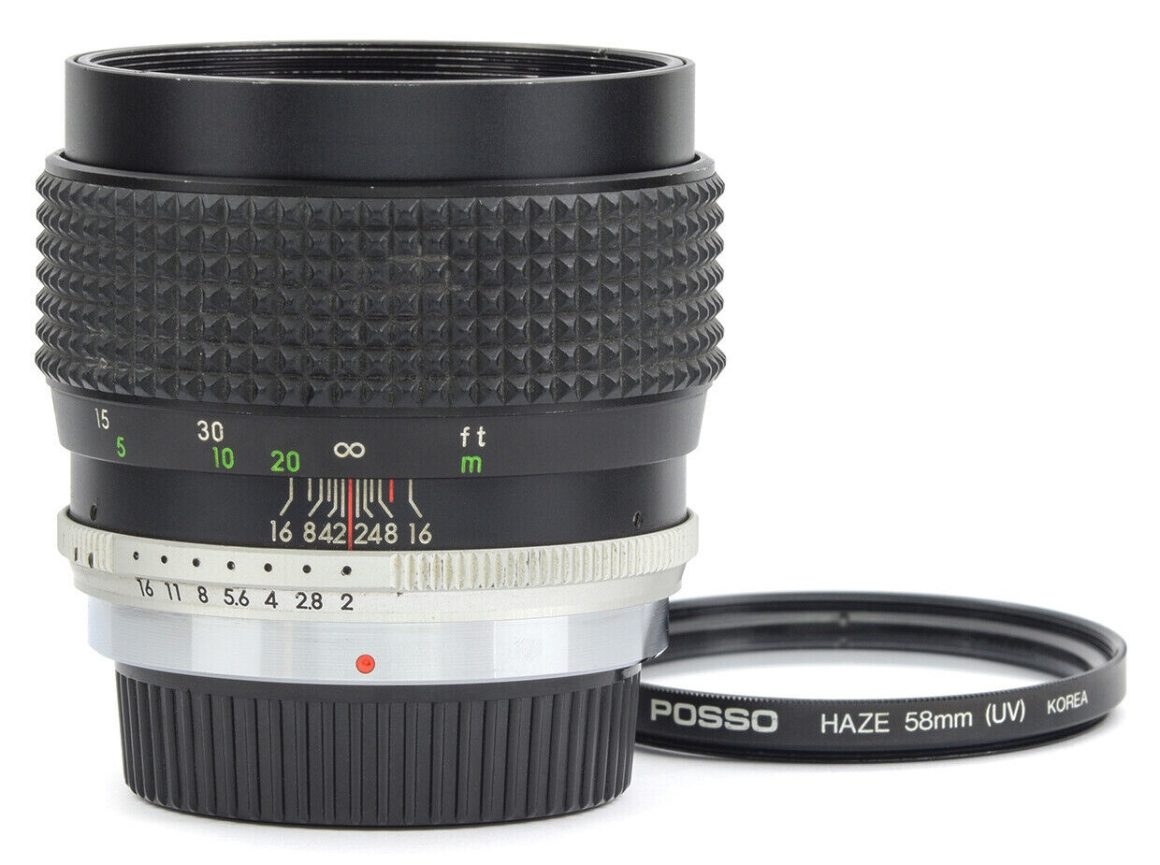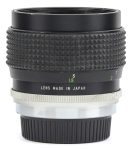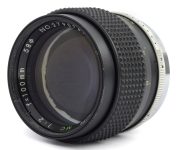Soligor Auto 100mm F/2 MC
akaSpiratone Minitel 100mm F/2 Pluracoat
Short telephoto prime lens • Film era • Discontinued
Abbreviations
| MC | Multi-layer anti-reflection coating is applied to the surfaces of lens elements. This anti-reflection coating increases light transmission, eliminates flare and ghosting, and maintains color consistence among all lens models. |
Specification
| Optical design: | |
| 35mm full frame | |
| 100mm | |
| F/2 | |
| 6 elements in 4 groups | |
| Canon FD [42mm] | |
| Contax/Yashica [45.5mm] | |
| Konica AR [40.5mm] | |
| M42 [45.5mm] | |
| Minolta SR [43.5mm] | |
| Nikon F [46.5mm] | |
| Olympus OM [46mm] | |
| Pentax K [45.5mm] | |
| 24.4° (35mm full frame) | |
| On Nikon D APS-C [1.53x] cameras: | |
35mm equivalent focal length: | 153mm (in terms of field of view) |
35mm equivalent speed: | F/3.1 (in terms of depth of field) |
Diagonal angle of view: | 16.1° |
| On Pentax K APS-C [1.53x] cameras: | |
35mm equivalent focal length: | 153mm (in terms of field of view) |
35mm equivalent speed: | F/3.1 (in terms of depth of field) |
Diagonal angle of view: | 16.1° |
| Diaphragm mechanism: | |
Diaphragm type: | Automatic |
Aperture control: | Aperture ring (with or without Auto Exposure setting) |
| 8 (eight) | |
| Focusing: | |
| 1.50m | |
| <No data> | |
Focusing modes: | Manual focus only |
Manual focus control: | Focusing ring |
| Physical characteristics: | |
| 400g (mount not specified) | |
| ⌀68×63mm (mount not specified) | |
| Accessories: | |
| Screw-type 58mm | |
| Built-in telescopic round | |
| <No data> |
Source of data
- Manufacturer's technical data.
Manufacturer description
Outstanding for portraits or candids, this marvel of sophistication and speed is as compact as many normal SLR lenses. With its built-in hood, the 100 mm f2 falls nothing short of excellence. Close-up sports and theatrical photography are perfectly suited for this lens.
From the editor
The same lens was sold under the name SPIRATONE PLURACOAT MINITEL 100 1:2 f=100mm.
Notes
- Independent-brand lenses were made for 35mm film SLR cameras by companies that competed with the camera manufacturers. Some came from factories that made lenses under their own brand names (Angenieux, Kiron, Sigma, Tamron, Tokina). Many others were national and international marketing organizations (Kalimar, Panagor, Rokunar, Soligor, Starblitz) that bought lenses from anonymous manufacturers. One firm — Vivitar — actually designed its own lenses and accessories, which were then subcontracted to manufacturing firms. Still others were private labels, sold only by specific photo specialty shops (Cambron, Quantaray, Spiratone).





